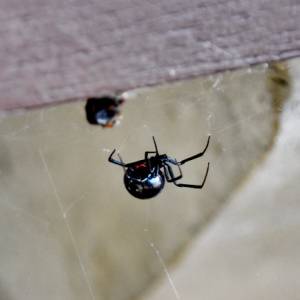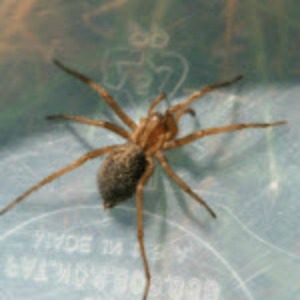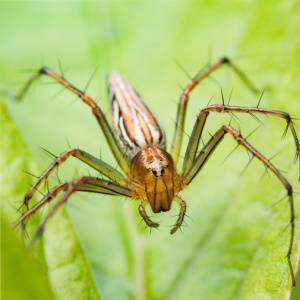How to Get Rid of Spiders in Denver
Denver is the perfect mix of urban amenities and outdoor adventure. Being exactly a mile high and having 300 days of blissful sunshine a year, it’s no wonder why there is also a robust population of spiders.
You might expect to see some spiders as you hike the beautiful Cherry Creek Regional Trail, but you don’t want the creepy crawlies in your home. Spiders cause a lot of fear and anxiety because, sometimes, they are dangerous.
Since Croach, Zero Issues with Spiders!
Since starting the Croach service a couple years ago, I've had zero issues with inspects, spiders, and rodents. I have had no spiders or crickets inside my house. Also, I no longer have the webs under the eaves of the house and no wasp nests. Highly recommended.
Read more from Scotty H.
Types of Spiders in Denver
According to the Colorado State University Extension, there are many spider species in Denver. These include the harmless House, Funnel Weaver, and Jumping spiders. The more problematic or poisonous spiders include:
- Hobo spider
- Black Widow spider
- Yellow Sac spider
- Brown Recluse spider

Black Widow

Hobo

Yellow Sac
Hobo Spider
The Hobo spider is a hairy light brown spider with tan, darker brown, or black markings on the thorax. While it's not the most dangerous spider we see in the field, it does bite humans. The bites can be ugly and unpleasant, eventually turning black and discharging fluid—reason enough to get these creatures out of your home.
Black Widow Spider
Many people in Denver believe black widows don't exist in Colorado, but they'd be very wrong. They can easily invade basements in our area. Many Denver residents also believe them to be solitary, but don't be fooled. Each female black widow produces 6 to 12 egg sacks in her lifetime containing 200 to 400 eggs. It doesn't take them long to produce a dangerous infestation.
Yellow Sac Spider
You can find the Yellow Sac spider both indoors and out in the Denver area. These spiders are pale yellow to a yellowish-green and look almost transparent.
As with the Hobo spider, there are varied reports of the level of toxicity of their bite. Their bite can cause an instant and intense stinging pain and a small red welt that itches for about a week.
Brown Recluse Spider
Often misidentified as Funnel Web or Wolf spiders, the Brown Recluse has a buckskin color and dark brown legs. The violin-shaped marking on its back and only three pairs of eyes are identifying factors.
At the initial bite site, a painful blister may form. Sometimes an ulcerous, slow-healing wound may form. The bites can cause severe pain, fever, chills, nausea, joint pain, and seizures.
What to Do If You Get Bitten By a Spider
Seek medical attention if you believe a spider has bitten you. A doctor can help you identify the spider bite, and can respond quickly if you have an especially bad reaction.
- Clean wound with soap and water
- Apply antibiotic cream
- Elevate to reduce swelling
- Apply an ice pack on the bite
- Take over-the-counter pain medication
- Watch for more symptoms
- Call your doctor (immediately if bitten by a Black Widow or Brown Recluse)
How to Prevent Spider Infestations in Denver
Denver residents may take many steps to prevent infestations:
- Call us the moment you see a spider. If you see one, thousands more may be hiding out in your home.
- Increase the frequency of various cleaning tasks like dusting, vacuuming, sweeping, and decluttering.
- Inspect all firewood before you bring it inside.
- Caulk and seal entry points at least once a year.
They Clean All Cobwebs!
Really love this company. I've never had a service that did so much! Our technician always does a thorough job. They clean all cobwebs and bug nests from the outside and spray the house for prevention. Inside the house they will spray for bugs and check for rodents inside and outside. Very good value for the money. Will continue to use them.
Read more from Michele D.
How to Control Spiders in Denver, CO
Spiders are resilient. One egg sac produces hundreds of young spiders hatched at once. If you see a single spider in your home, chances are good you already have an infestation. Because of their life cycle and habits, it is next to impossible to get rid of spiders without the help of experts.
Many products found in home improvement stores used to kill spiders are ineffective and unsafe. Even if you can get them to leave the area for a time, they will recolonize. So ongoing and professional treatment is important. A one-time extermination approach worsens the problem.
Croach®: Proven Spider Control for Denverites
When you're dealing with a persistent, resilient pest like spiders, it's important to call the experts. DIY spider control is both dangerous and ineffective. You need an integrated pest management approach and an ongoing treatment plan to eliminate both the spiders you see and the associated pests they may be feeding upon.
Take advantage of our proven approach:
- Thorough inspections
- Customized IPM plans
- Eco-friendly, commercial-grade control products
- Regular treatments
- Ongoing spider prevention
Our proven approach keeps spiders out of your house for good!
Reliable Spider Control In Denver
You deserve a pest-free home. Get rid of spiders with our trusted technicians today.
Trusted Pest Control Near Denver
Croach® proudly serves the Front Range of Colorado, including Arvada, Aurora, Boulder, Brighton, Broomfield, Castle Rock, Centennial, Commerce City, Denver, Erie, Frederick, Glendale, Henderson, Hudson, Lakewood, Littleton, Longmont, Loveland, Parker, Thornton, Westminster, and Windsor.
Licensed, Bonded, Insured
CO License #16006


